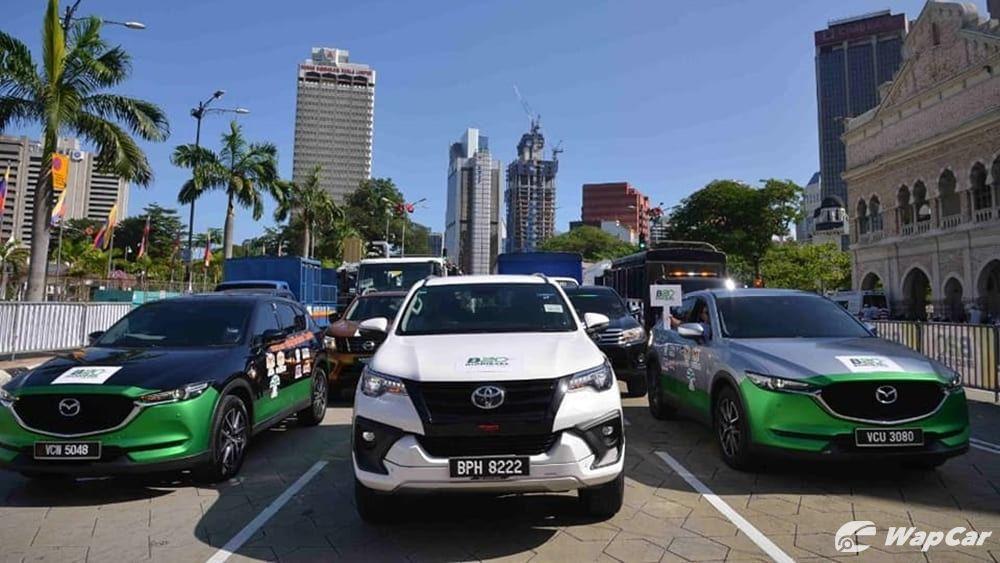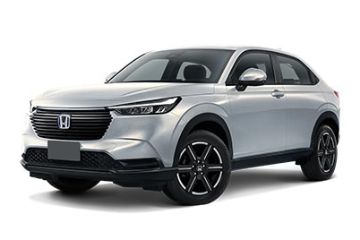
In 2018, it was estimated by BP that global oil reserves were at 1.73 trillion barrels – enough to last the world about 50 years at current production and consumption rate.
Does that mean earth runs dry by 2070 then?
Well, not quite.

In 2018, it was estimated by BP that global oil reserves were at 1.73 trillion barrels – enough to last the world about 50 years at current production and consumption rate.
Does that mean earth runs dry by 2070 then?
Well, not quite.

You see, it makes more economic sense that when oil supply starts to diminish, prices go up and when that happens, people are expected to buy less of it. Eventually prices will be sky-high it becomes a niche product purchased by very few while others will have found alternatives.
Which means that combustion engines which runs on dinosaur juice will not be able to sustain forever, not economically at least and people have been searching for said alternatives.

So what are the alternatives?
Let’s take a look at some of them. Biodiesel, manufactured from just about any oil not from underground such as vegetable oil, animal fats, reprocessed restaurant grease, or more commonly in our case, palm oil.
Conventional diesel engines are able to run on biodiesel blends without modifications. In Malaysia, the implementation of B20 biodiesel has already begun, though it only applies to the Euro 2M diesel, Euro 5 diesel remains at B7. The number basically denotes the percentage of the biofuel blend, i.e. B20 – 20%.

The good news is that diesel engines are able to run on pure biodiesel without major modifications. But that’s not the main issue, the problem is there are simply not enough greases or palm trees for biodiesel to be a complete substitute of fossil fuel.
Next is ethanol, also a biofuel like biodiesel but this time for petrol engines. Ethanol is the same alcohol found in alcoholic drinks and they are made the same way by fermenting sugars from wheat, sugarcane, corn, etc. Similar to biodiesel, normal petrol engines are able to run on ethanol blends up to a certain percentage without major modifications.

Just like the issue with biodiesel, can you imagine how much crop we will need and how food prices will be affected if the world decided to solely use ethanol? So at this stage then, biofuel does not appear to be able to fully replace petroleum.
Onwards to electric cars then. Hybrid electric cars are dismissed here because the electric driving range is rather limited, even for plug-in hybrids. For longer journeys, it will still require the combustion engine. But we are talking about the hypothetical stratospheric fuel prices here.

Before we move on to battery powered electric vehicles (EV), let’s talk about fuel cell vehicles. As its name suggests, fuel cell vehicles use a fuel cell instead of batteries. In simple terms, it uses compressed hydrogen and oxygen from the air to generate electricity and power the electric motor. And it only emits water as a result.
The point of fuel cell cars is to combine the convenience of refueling engine-powered cars with the advantages of electric cars. Filling up hydrogen cars is comparable to cars with combustion engine, just drive up to a hydrogen station and start filling up with compressed hydrogen. They have a range between 300km to 500km which is also similar to engine powered cars.

This really seems to be the most viable option so far but there is a catch - costs, for both the cars and the production of hydrogen. Although hydrogen is the most abundant element in the world, it is always sticking to another element and to free it up takes a lot of work hence the cost.
Presently in the UK, both the Toyota Mirai and Hyundai Nexo are priced at around £66,000. These prices are BMW M3 money. In Malaysia, we’re looking at prices north of RM 500,000 if there aren’t any tax incentives.

Availability is presently an issue as well. Hydrogen stations are not common and there isn’t any in Malaysia. That being said, if more companies begin to work on this, it could become a different story.
Moving on to battery powered EVs. At the moment, most people are concerned about the long charging time, expensive battery replacement cost, limited charging stations, and of course the price of EVs itself.

Manufacturers like Tesla Motors have always been working to overcome the disadvantages of battery powered electric cars. They have proved that EVs can be ludicrously quick and have decent range. The Model S Performance variant does 0-100 km/h in about 2.5 seconds and has a driving range of around 560 km.
To address the charging time and limited stations, Tesla introduced the Supercharger. A fast charging station that is able to provide about 270km of range in just 30 minutes and is currently expanding worldwide. Though Malaysia is excluded, we’ll get into the reasons a bit later.

Battery replacement cost is still on the higher side. But the good news here is that the price of lithium ion batteries has been on a steady decline for the past decade, according to a report by BloombergNEF. With more manufacturers like Volvo going the full electric route, battery prices will continue to fall.
The Tesla Model 3 was launched at $35,000, lower than any Tesla models that came before and that is part of Tesla’s plan to make EVs more affordable. Not forgetting that EVs in China are on the rise and with that, we can expect EV prices to become more and more affordable.
Where does this leave us then?
BMW believes that the future will be combination of both fuel cell and battery powered EV. Personally, I agree with BMW and would even add biofuel to the mix, but my guess is that it wouldn’t be more widely used than it is at present moment.
McLaren on the other hand, had an interview with Autocar proposing the use of synthetic fuel as an alternative to EVs. It was mentioned that today’s combustion engines will be able to run synthetic fuel with only minor modifications. However, details of the synthetic fuel are still scarce and its feasibility remains to be seen.

That leaves battery powered EV in the lead for future mobility. Currently, there are only 2 EVs officially available in Malaysia – the Nissan Leaf priced at RM 188,888 and BMW i3s priced at RM 278,800.
Why isn’t Tesla setting up shop in Malaysia?
As reported by NST, the CEO of Greentech Malaysia which imported a small number of Teslas into Malaysia, Ahmad Hadris Haris, shed some light on this matter.

“Tesla asked us three questions. First of all, whether there is preferential treatment for EVs. Secondly, do we have the ecosystem, and thirdly, does green technology have good visibility and awareness among the public,” said Ahmad Hadri.
He added that the main challenge would be the preferential treatment for EVs. As witnessed in the NAP 2020, no further clarification was given on the incentives for hybrids and EVs.

When it comes to the infrastructure support and the general public’s perception on EVs, those can be gradually addressed. Recently, TNB Energy Services installed a few charging stations along the North-South highway in the southern region. As EVs and its ecosystem progress, the public awareness and acceptance will follow suit.
Right now it’s clear that the future is EV, and that is coming from a huge fan of combustion engines. If Malaysia wants to stay on top of things, it needs to start planning for the electrified future.

Hassle-free purchasing, get your next car fast!

2022 Honda HR-V 1.5 S
Upgrade
Add your car